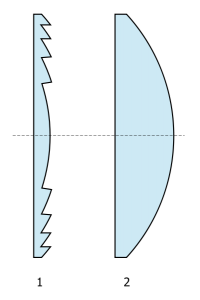A brief history:
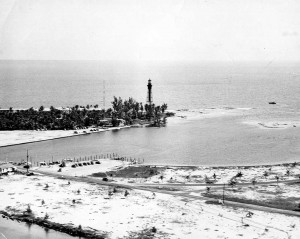 In 1901, Congress authorized the construction of the Hillsboro lighthouse as it stands today. According to the bill, "This light is very much needed by vessels bound through the Florida straits into the Gulf of Mexico or to the island of Cuba. Its erection will complete the chain of lights which extend from Jupiter Inlet to Tortugas, so that the navigator can make one light before losing sight of another."
In 1901, Congress authorized the construction of the Hillsboro lighthouse as it stands today. According to the bill, "This light is very much needed by vessels bound through the Florida straits into the Gulf of Mexico or to the island of Cuba. Its erection will complete the chain of lights which extend from Jupiter Inlet to Tortugas, so that the navigator can make one light before losing sight of another."
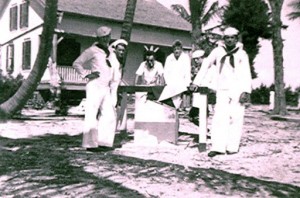 Built in 1906 by Russell wheel & Foundry Co., the Hillsboro lighthouse was constructed in Detroit, MI and shipped 4,000 nautical miles to its current location.
Built in 1906 by Russell wheel & Foundry Co., the Hillsboro lighthouse was constructed in Detroit, MI and shipped 4,000 nautical miles to its current location.
In 1907, the Hillsboro Lighthouse was first illuminated.
The light source was provided by an incandescent Oil Vapor Lamp, in a revolving in a Second Order Fresnel Lens floating on a pool of mercury. Later, the mercury was removed and the light source was replaced with a modern, more efficient alternative.
Back in the early days, the Hillsboro lighthouse was operated by a Lighthouse keeper that resided in the buildings at the base of the lighthouse. Today, the Hillsboro Lighthouse is fully automated and requires minimal human interaction to keep it running.
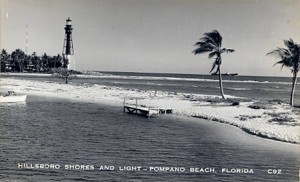 From 1907 to the present day, the Hillsboro Inlet Lighthouse has withstood dangerous storms and the harsh marine environment in order to stand as a sentry and guide ocean voyagers in the right direction. It not only continues to be a beacon, it accommodates visitors for tours. Lighthouse Scenic Tours is the exclusive tour provider of the Hillsboro Inlet Lighthouse.
From 1907 to the present day, the Hillsboro Inlet Lighthouse has withstood dangerous storms and the harsh marine environment in order to stand as a sentry and guide ocean voyagers in the right direction. It not only continues to be a beacon, it accommodates visitors for tours. Lighthouse Scenic Tours is the exclusive tour provider of the Hillsboro Inlet Lighthouse.
Sources:
- "HLPS - History - Hillsboro Inlet lighthouse." hillsborolighthouse.org. N.p., n.d. Web. 25 Mar. 2014 <http://www.hillsborolighthouse.org/history>.
- "Hillsboro Inlet Light - Wikipedia, the free encyclopedia." Wikipedia. N.p., n.d. Web. 25 Mar. 2014 <http://en.wikipedia.org/wiki/Hillsboro_Inlet_Light>
What's in a lens?
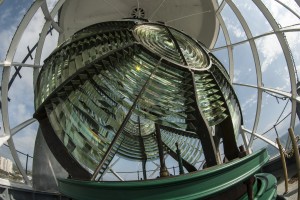 What makes the Hillsboro Inlet Lighthouse shine so brightly? It is the Fresnel Lens developed by the French physicist Augustin-Jean Fresnel. The unique lens design allows for a thinner design compared to lenses of traditional design, and can capture more oblique light from a light source, such as an oil lamp, allowing the light to be more visible over greater distances.
What makes the Hillsboro Inlet Lighthouse shine so brightly? It is the Fresnel Lens developed by the French physicist Augustin-Jean Fresnel. The unique lens design allows for a thinner design compared to lenses of traditional design, and can capture more oblique light from a light source, such as an oil lamp, allowing the light to be more visible over greater distances.
How the Frensnel lens collimates light:
The Fresnel lens reduces the amount of material required compared to a conventional lens by dividing the lens into a set of concentric annular sections. In each section, the overall thickness is decreased compared to an equivalent simple lens. This effectively divides the continuous surface of a standard lens into a set of surfaces of the same curvature, with stepwise discontinuities between them.
Fresnel lens design allows a substantial reduction in thickness (and thus mass and volume of material), at the expense of reducing the imaging quality of the lens, which is why precise imaging applications such as photography still use conventional bulky lenses.
Fresnel lenses are usually made of glass or plastic; their size varies from large (old historical lighthouses, meter size) to medium (book-reading aids, OHP viewgraph projectors) to small (TLR/SLR camera screens, micro-optics)
Sources:
"Fresnel lens - Wikipedia, the free encyclopedia." Fresnel lens. N.p., n.d. Web. 25 Mar. 2014 <http://en.m.wikipedia.org/wiki/Fresnel_lens>

